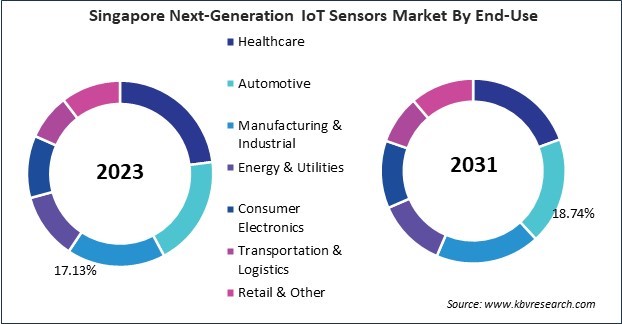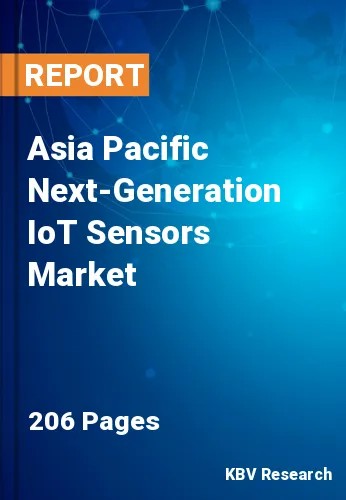The Asia Pacific Next-Generation IoT Sensors Market would witness market growth of 51.2% CAGR during the forecast period (2024-2031).
The China market dominated the Asia Pacific Next-Generation IoT Sensors Market by Country in 2023, and would continue to be a dominant market till 2031; thereby, achieving a market value of $5,920.8 million by 2031. The Japan market is registering a CAGR of 50.3% during (2024 - 2031). Additionally, The India market would showcase a CAGR of 52.2% during (2024 - 2031).

predictive maintenance powered by IoT sensors transforms how factories operate. For example, companies like General Electric use sensors to monitor industrial equipment and machinery in real-time, analyzing data to predict when a part will fail. By catching issues early, manufacturers can avoid the costs associated with unscheduled downtime, which can halt production and lead to significant revenue losses.
Moreover, wind farms use IoT sensors in the energy sector to monitor turbine performance and detect early mechanical wear or failure signs. This real-time data helps prevent costly shutdowns and ensures a continuous energy supply. Similarly, logistics companies like UPS employ predictive maintenance through delivery vehicle sensors.
The demand for next-generation IoT sensors is expanding significantly across multiple sectors as nations in the Asia Pacific region continue to adopt smart technologies and digital solutions. According to the Asian Development Bank (ADB), the region's investment in digital infrastructure is expected to surge, underlining the increasing role of IoT in driving economic growth. Key sectors propelling this expansion include food and beverage, aerospace and defense, smart cities, and wireless communication technologies, all of which are becoming more reliant on IoT sensor solutions for enhanced efficiency and innovation. This trend is further supported by large-scale regional digital initiatives, which aim to enhance connectivity and technological advancement.
Free Valuable Insights: The Global Next-Generation IoT Sensors Market is Predict to reach USD 66.14 billion by 2031, at a CAGR of 50.2%
Based on Power Source, the market is segmented into Battery-Powered Sensors, Energy-Harvesting Sensors, and Plugged-In Sensors. Based on Connectivity, the market is segmented into Wi-Fi, Bluetooth, ZigBee, LPWAN, and 5G & Other. Based on Sensor Type, the market is segmented into Temperature Sensors, Pressure Sensors, Motion Sensors, Proximity Sensors, Image Sensors, and Other Sensor Type. Based on Deployment Type, the market is segmented into Cloud-Based and On-Premises. Based on Technology, the market is segmented into MEMS (Micro-Electro-Mechanical Systems), CMOS (Complementary Metal-Oxide-Semiconductor), NEMS (Nano-Electro-Mechanical Systems), RFID (Radio Frequency Identification), and Other Technology. Based on End-Use, the market is segmented into Healthcare, Automotive, Manufacturing & Industrial, Energy & Utilities, Consumer Electronics, Transportation & Logistics, and Retail & Other. Based on countries, the market is segmented into China, Japan, India, South Korea, Singapore, Malaysia, and Rest of Asia Pacific.
By Power Source
By Connectivity
By Sensor Type
By Deployment Type
By Technology
By End-Use
By Country
Our team of dedicated experts can provide you with attractive expansion opportunities for your business.

